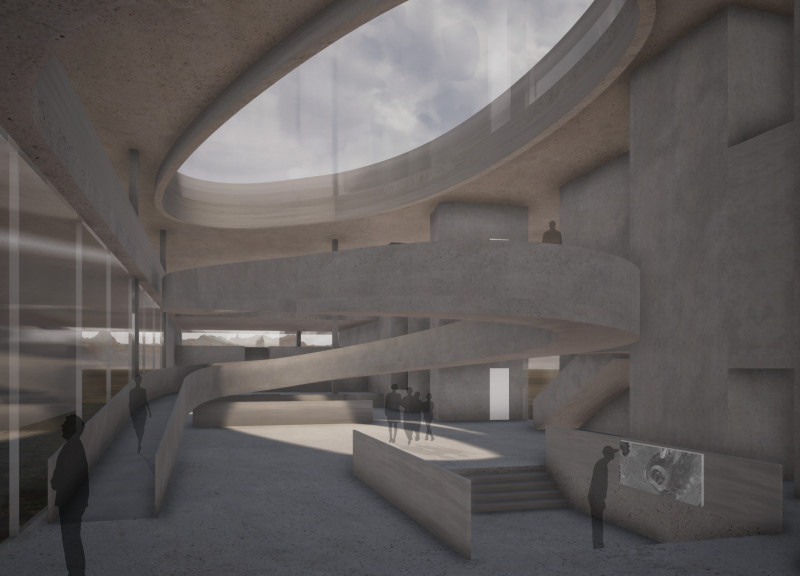5 key facts about this project
The design presents a carefully considered response to its natural environment, emphasizing the relationship between various programs while respecting the existing landscape. Situated in a location that influences its architecture, the building serves primarily as a museum, designed to encourage exploration and interaction. The concept revolves around openness and connection, allowing visitors to feel engaged with both the structure and its surroundings.
Exhibition Hall Design
At the heart of the design is the Exhibition Hall, which plays a critical role in welcoming visitors. The inclusion of a ceiling designed to let in natural light creates a warm and inviting space. This steady flow of daylight enriches the atmosphere, making it more conducive for exhibitions and interactive experiences. Such a setting invites visitors to engage with the pieces on display, along with the rich landscape that frames the hall.
Spatial Configuration
The layout of the first floor is aligned with the site's contours to enhance accessibility and movement throughout the building. This thoughtful arrangement allows for easy navigation between different areas, making it simple for visitors to explore the museum. The design integrates circulation paths within the overall structure, aiming to create a more engaging user experience.
Symbolic Features
A key element within the Exhibition Hall is a lamp inspired by volcanic formations. Positioned prominently, this fixture adds an important visual aspect to the space. As guests enter, they are greeted by this unique feature, which connects the building to its geological context. This addition not only enhances the visual appeal but also contributes to the overall understanding of the site.
Landscape Interaction
The Hall Exhibitions on the first floor offer expansive views of the surrounding scenery, allowing visitors to connect with nature while inside. This design creates a fluid interaction between the interior and the exterior. By considering the potential for walls that align with the landscape, the architects demonstrate their commitment to optimizing sightlines and enriching visitors’ experiences within the museum.
The focus on natural light, carefully planned spaces, and thoughtful elements like the volcanic-inspired lamp fosters a meaningful connection with the surroundings. This design makes the museum not just a place for exhibitions, but also a space for quiet reflection and interaction with the landscape.





















































